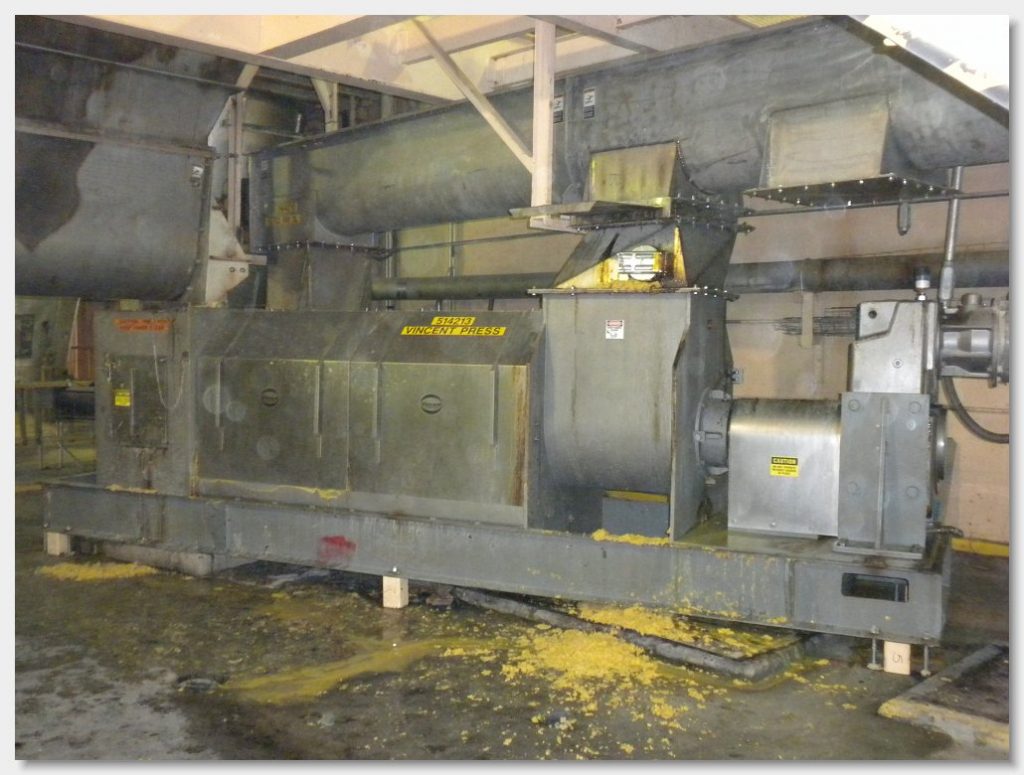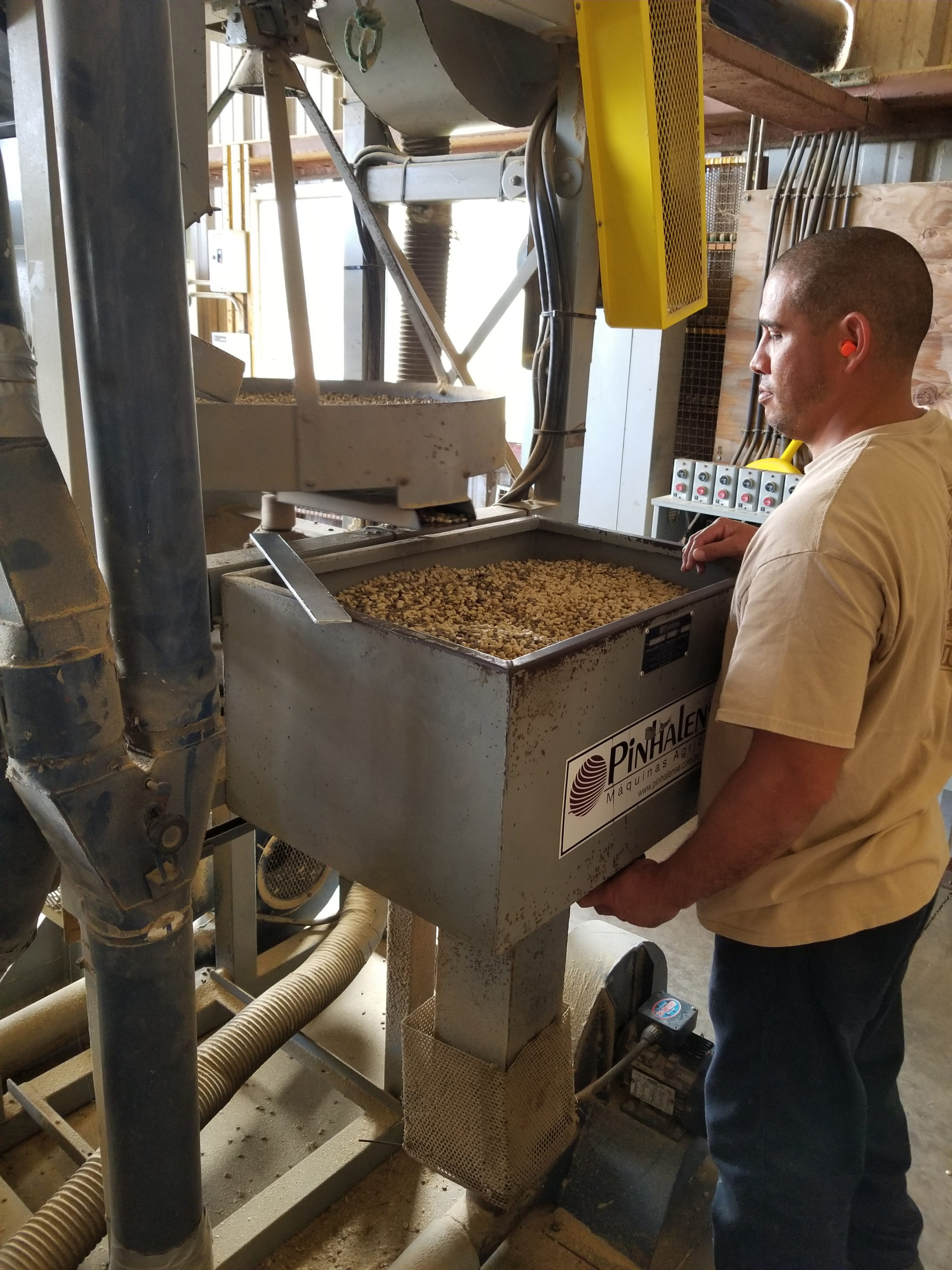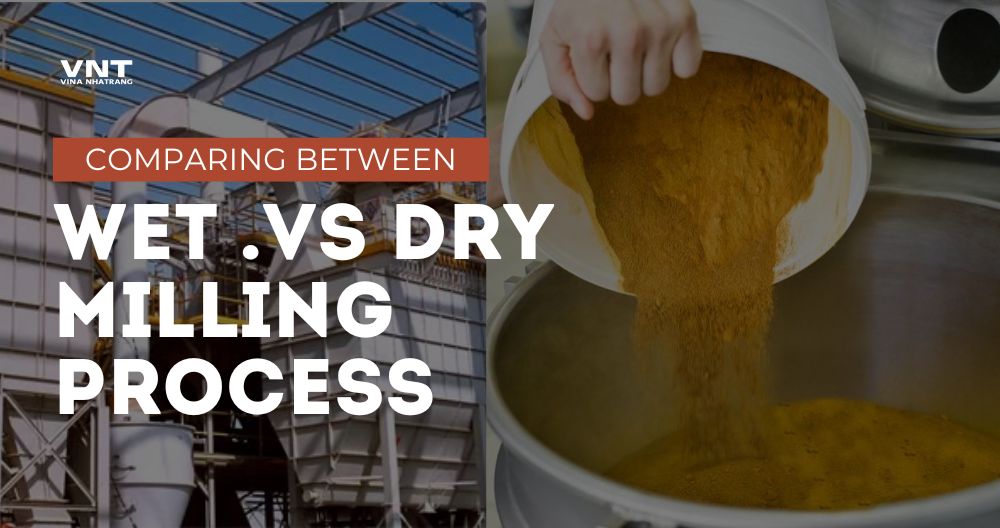The wet milling and dry milling process are two distinct methods used for particle size reduction in a variety of industries, including food processing, chemicals, pharmaceuticals (pharmaceutical ingredient), and more. Each technique has its own advantages, applications, and considerations that make it suitable for different types of materials and desired outcomes. This article will provide a detailed comparison between the two methods, highlighting the pros and cons of each, as well as their various applications. Let’s explore how these processes work, the differences between them, and when each one is best used.
Comparison Table: Wet Milling Process vs. Dry Milling Process: Key Differences
| Aspect | Wet Milling Process | Dry Milling Process |
|---|---|---|
| 1. Use of Liquid | Requires a liquid medium (water or solvent) | No liquid involved; dry process |
| 2. Particle Size Reduction | Can achieve finer sizes | Limited by grinding mechanisms |
| 3. Cost | Higher due to additional equipment and steps | Lower due to simpler setup |
| 4. Heat Generation | Lower heat due to liquid cooling | Higher heat due to friction |
| 5. Dust Production | Minimal, as particles are suspended in liquid | Can be significant, requiring dust control |
| 6. Suitability for Heat-Sensitive Materials | Suitable due to reduced heat | Less suitable because of heat from grinding |
| 7. Environmental Concerns | Liquid waste needs proper disposal | Dust and airborne particles must be managed |
What is the Wet Milling Process?

Corn Wet Milling Process | Vincent Corp
Wet milling process is a sophisticated size reduction and separation technique that involves processing materials in a liquid medium to break down particles into finer sizes, typically water or an organic solvent. This process is widely used in various industries including food processing, pharmaceuticals, minerals, and chemical manufacturing.
The presence of liquid during milling offers several advantages over dry milling, including better heat dissipation, reduced dust formation, and more efficient particle size reduction.
Stages Of The Wet Milling Process
1. Material Preparation and Wetting
- Initial Assessment
- Analysis of material properties (hardness, initial particle size, moisture content)
- Selection of appropriate liquid medium based on material compatibility
- Determination of solid-to-liquid ratio for optimal processing
- Pre-treatment
- Cleaning and washing of raw materials to remove contaminants
- Pre-crushing, break down large particles if necessary
- Temperature conditioning to ensure optimal processing
- Slurry Formation
- Controlled addition of material to the liquid medium
- Use of surfactants or dispersing agents when needed
- Monitoring of slurry viscosity and density
- Typical solid content ranges from 15-50% depending on application
2. Deagglomeration and Dispersion
- Initial Mixing
- Use of high-shear mixers to break up soft agglomerates
- Application of ultrasonic treatment for stubborn agglomerates
- Implementation of pre-dispersion tanks with mechanical agitators
- Stabilization
- Addition of stabilizing agents to prevent re-agglomeration
- pH adjustment for optimal dispersion
- Use of protective colloids or polymeric dispersants
3. Grinding/Milling Operation
- Equipment Types
Equipment Types: Various wet milling equipment, such as stirred media mills, ball mills, bead mills, and colloid mills, are utilized depending on the application.
-
- Stirred media mills (attritors)
- Ball mills (horizontal or vertical)
- Bead mills
- Colloid mills
- Jet mills with wet operation capability
- Grinding Media Selection
- Materials: ceramic, steel, glass, or zirconia
- Size ranges: 0.1-10mm depending on target particle size
- Shape considerations: spherical, cylindrical, or irregular
- Loading volume: typically 70-85% of chamber volume
- Process Parameters
- Rotation speed/tip speed
- Residence time
- Temperature control (usually 20-40°C)
- Pressure conditions
- Flow rate through the mill
4. Separation and Recovery
- Media Separation
- Dynamic separators
- Static screens
- Magnetic separation for metallic media
- Automatic media return systems
- Product Classification
- Hydrocyclones for particle classification
- Centrifugation
- Filter press operations
- Membrane filtration systems
5. Post-Processing (Application Dependent)
- Liquid Processing Route
- Concentration adjustment
- Stabilization
- Packaging as slurry
- Quality control testing
- Dry Processing Route
- Spray drying
- Drum drying
- Freeze drying
- Fluid bed drying
Advantages of the Wet Milling Process
Process Benefits
- Enhanced Size Reduction Efficiency:
- Achievement of submicron particle sizes
- Better control over particle size distribution
- Reduced tendency for agglomeration
- Improved Process Control:
- Better heat dissipation
- More uniform particle size distribution
- Enhanced mixing and homogenization
- Precise control of surface chemistry
- Safety Advantages:
- Minimal dust generation
- Reduced explosion risks
- Better containment of hazardous materials
- Improved workplace safety
- Quality Benefits:
- Superior product uniformity
- Better dispersion stability
- Enhanced product performance
- Improved batch-to-batch consistency
Disadvantages and Challenges of the Wet Milling Process
Technical Challenges
- Process Complexity:
- Multiple unit operations required
- Complex equipment maintenance
- Need for specialized operator training
- Critical process parameter control
- Operational Issues:
- Equipment wear and contamination
- Media separation difficulties
- Product loss during processing
- Extended processing times
Economic Considerations
- Cost Factors:
- Higher capital investment
- Increased operational costs
- Waste treatment expenses
- Energy consumption
- Additional labor requirements
- Resource Requirements:
- Water or solvent consumption
- Energy for drying
- Waste treatment facilities
- Storage and handling systems
Industrial Applications
- Food Industry
- Corn wet milling for starch production
- Chocolate production
- Baby food manufacturing
- Coffee processing (Check out our Industrial Coffee Mill)
- Pharmaceutical Industry
Pharmaceutical Industry: Wet milling is employed for active pharmaceutical ingredient (API) particle size reduction, vaccine adjuvant preparation, drug delivery system development, and excipient processing.
-
- API particle size reduction
- Vaccine adjuvant preparation
- Drug delivery system development
- Excipient processing
- Chemical Industry
- Pigment manufacturing
- Catalyst preparation
- Ceramic slurry production
- Battery material processing
- Mining and Minerals
- Mineral concentrate preparation
- Precious metal extraction
- Clay processing
- Cement production
Process Control and Optimization of the Wet Milling Process
Critical Parameters
- Slurry Properties
- Viscosity
- Solid content
- Temperature
- pH value
- Operating Conditions
- Grinding media filling ratio
- Rotation speed
- Pump pressure
- Flow rate
- Residence time
- Quality Metrics
- Particle size distribution
- Product stability
- Contamination levels
- Yield
Monitoring and Control Systems
- In-line particle size measurement
- Real-time viscosity monitoring
- Temperature control systems
- Automated sampling systems
- Process data logging and analysis
Environmental and Safety Considerations of the Wet Milling Process
Environmental Aspects
- Water consumption and recycling
- Waste stream management
- Energy efficiency
- Chemical handling and disposal
Safety Measures
- Explosion protection systems
- Pressure relief devices
- Personal protective equipment requirements
- Chemical exposure controls
- Emergency shutdown procedures
Cost Considerations of the Wet Milling Process
Capital Costs
- Equipment investment
- Installation and commissioning
- Auxiliary systems
- Control and monitoring systems
Operating Costs
- Energy consumption
- Material costs
- Labor requirements
- Maintenance and wear parts
- Waste treatment and disposal
What is the Dry Milling Process?

Dry Milling Process
Dry milling is a sophisticated size reduction process that operates without liquid media, utilizing mechanical forces to reduce particle sizes. This technology plays a crucial role in various industries, from food processing to mineral preparation, offering unique advantages in terms of efficiency and cost-effectiveness.
Stages of the Dry Milling Process
1. Pre-Milling Material Preparation
- Initial Assessment
- Material characterization (hardness, friability, moisture content)
- Particle size distribution analysis
- Temperature sensitivity evaluation
- Material flow properties assessment
- Pre-Processing Steps
- Moisture content adjustment (if needed)
- Magnetic separation of metallic contaminants
- Screening of foreign materials
- Temperature conditioning
- De-agglomeration of clumped materials
2. Primary Size Reduction
- Equipment Types
- Impact Mills
- Hammer mills
- Pin mills
- Cage mills
- Disintegrators
- Compression Mills
- Roller mills
- Ring-roller mills
- Bowl mills
- High-pressure grinding rolls
- Attrition Mills
- Disc mills
- Universal mills
- Pulverizers
- Impact Mills
- Operating Parameters
- Feed rate control
- Rotor speed optimization
- Gap settings
- Impact force adjustment
- Temperature monitoring
- Air flow rates
3. Secondary Size Reduction
- Fine Grinding Equipment
- Jet mills
- Ball mills
- Vibratory mills
- Planetary mills
- Process Controls
- Particle size monitoring
- Energy consumption tracking
- Wear rate assessment
- Temperature control
- Product flow analysis
4. Classification and Separation
Air Classification
- Technology Types
- Static air classifiers
- Dynamic air classifiers
- Centrifugal classifiers
- Gravitational classifiers
- Operating Parameters
- Air velocity control
- Classifier wheel speed
- Feed rate optimization
- Cut point adjustment
- Separation efficiency monitoring
Screening Systems
- Equipment Options
- Vibrating screens
- Rotary screens
- Gyratory screens
- Planetary screens
- Screen Specifications
- Mesh sizes
- Screen materials
- Vibration amplitude
- Screen angle
- Capacity ratings
5. Product Collection and Handling
- Collection Systems
- Cyclones
- Bag filters
- Electrostatic precipitators
- Scrubbers
- Material Handling
- Pneumatic conveying
- Mechanical conveying
- Storage systems
- Packaging solutions
Advanced Technologies and Innovations of the Dry Milling Process
Modern Control Systems
- Automated Process Control
- Real-time particle size monitoring
- Automated feed rate adjustment
- Load-sensing systems
- Energy optimization
- Predictive maintenance
- Digital Integration
- IoT sensors
- Data analytics
- Remote monitoring
- Process optimization algorithms
- Quality control systems
Energy Efficiency Improvements
- Variable frequency drives
- High-efficiency motors
- Energy recovery systems
- Optimal grinding circuits
- Smart control algorithms
Advantages of the Dry Milling Process
Economic Benefits
- Operational Cost Savings
- Lower energy consumption per unit
- Reduced labor requirements
- Minimal waste handling costs
- Lower maintenance expenses
- Simplified process flow
- Capital Investment Benefits
- Lower initial equipment costs
- Reduced facility requirements
- Simpler installation process
- Faster return on investment
- Lower infrastructure needs
Process Advantages
- Operational Flexibility
- Quick product changeover
- Easy cleaning between batches
- Simple maintenance procedures
- Adaptable process parameters
- Multiple product capabilities
- Quality Benefits
- Better control over moisture content
- Reduced contamination risks
- Consistent product quality
- Improved traceability
- Enhanced product stability
Limitations and Challenges of the Dry Milling Process
Technical Limitations
- Process Constraints
- Maximum achievable fineness
- Heat generation issues
- Wear and tear on equipment
- Product uniformity challenges
- Material flow issues
- Operational Challenges
- Dust control requirements
- Noise levels
- Maintenance frequency
- Equipment wear rates
- Product recovery efficiency
Safety Considerations
- Dust Hazards
- Explosion risks
- Respiratory protection needs
- Housekeeping requirements
- Static electricity concerns
- Cross-contamination risks
- Operational Safety
- Noise exposure
- Mechanical hazards
- Thermal risks
- Ergonomic considerations
- Emergency procedures
Industrial Applications of the Dry Milling Process
Food Processing
- Grain Milling
- Wheat flour production
- Corn meal manufacturing
- Rice flour processing
- Specialty grain products
- Animal feed preparation
- Specialty Food Products
- Spice grinding
- Sugar powdering
- Coffee processing
- Cocoa processing
- Nut flour production
Mineral Processing
- Industrial Minerals
- Limestone processing
- Clay preparation
- Talc grinding
- Feldspar processing
- Silica production
- Mining Applications
- Ore preparation
- Coal processing
- Cement manufacturing
- Aggregate production
- Mineral concentration
Chemical Industry
- Chemical Processing
- Catalyst preparation
- Pigment manufacturing
- Polymer grinding
- Fertilizer production
- Powder coating materials
- Specialty Applications
- Pharmaceutical excipients
- Battery materials
- Ceramic powders
- Advanced materials
- Recycling applications
Process Optimization of the Dry Milling Process
Key Performance Indicators
- Production Metrics
- Throughput rates
- Energy efficiency
- Product quality
- Yield optimization
- Downtime reduction
- Quality Parameters
- Particle size distribution
- Product uniformity
- Contamination levels
- Moisture content
- Temperature control
Optimization Strategies
- Equipment Selection
- Application-specific choices
- Capacity matching
- Energy efficiency
- Maintenance requirements
- Future scalability
- Process Parameters
- Feed rate optimization
- Speed adjustments
- Classification settings
- Air flow control
- Temperature management
Environmental Considerations of the Dry Milling Process
Dust Control
- Collection Systems
- Baghouse filters
- Cyclone separators
- Wet scrubbers
- HEPA filtration
- Ventilation systems
- Emission Control
- Monitoring systems
- Compliance requirements
- Regular maintenance
- Performance testing
- Documentation
Sustainability Measures
- Energy Management
- Power monitoring
- Efficiency programs
- Heat recovery
- Alternative energy use
- Carbon footprint reduction
- Waste Reduction
- Material recovery
- Recycling programs
- By-product utilization
- Process optimization
- Packaging reduction
Future Trends and Developments of the Dry Milling Process
Technological Advances
- Equipment Innovations
- Advanced materials
- Smart controls
- Improved efficiency
- Reduced maintenance
- Enhanced safety features
- Process Improvements
- Automation integration
- Digital twin technology
- Predictive maintenance
- Real-time optimization
- Quality control advances
Industry Evolution
- Market Trends
- Sustainability focus
- Product customization
- Energy efficiency
- Environmental compliance
- Safety improvements
- Future Opportunities
- New applications
- Market expansion
- Technology integration
- Process optimization
- Value-added services
Conclusion
The choice between wet milling process and dry milling process is influenced by factors such as particle size requirements, material sensitivity, processing time, cost, and environmental considerations. Understanding the differences and advantages of each method allows for selecting the optimal milling technique for specific applications. While wet milling is ideal for achieving finer sizes and managing heat-sensitive materials, dry milling is often preferred for its cost-effectiveness, speed, and simplicity. As milling technology continues to advance, hybrid methods and specialized milling techniques are becoming more prominent, further enhancing the capabilities of both wet and dry milling.
The wet milling process is a powerful tool in the milling arsenal, offering distinct advantages when smaller particle sizes, reduced dust, and better homogeneity are needed. At the same time, dry milling remains a robust and versatile option for a wide range of applications where liquid involvement is impractical. By understanding the benefits and limitations of each process, manufacturers can make informed decisions that optimize product quality and process efficiency.
FAQ
Q1: What is the primary difference between wet milling process and dry milling process?
A1: The main difference is that wet milling uses a liquid medium, while dry milling operates without any liquid. This distinction impacts the particle size reduction process, operational costs, and the quality of the final product.
Q2: What are the advantages of wet milling process ?
A2: Wet milling provides finer particle sizes, better product uniformity, and reduced dust hazards. It also allows for enhanced control over the milling process, making it ideal for sensitive materials.
Q3: What are the disadvantages of wet milling process ?
A3: Wet milling tends to be more expensive due to additional equipment and processing steps. It also requires careful management of water use and waste.
Q4: Why would one choose dry milling process instead of wet milling process ?
A4: Dry milling is often preferred for its lower capital and operational costs, greater operational flexibility, and minimal waste handling. It’s suitable for materials that do not require moisture during processing.
Q5: Are there environmental concerns related to either milling process?
A5: Yes, wet milling generally consumes more water, raising environmental concerns. In contrast, dry milling is considered more environmentally friendly due to reduced water usage.
Q6: What industries typically use wet milling process ?
A6: Wet milling is commonly used in food industries, particularly for products like coffee, chocolate, and certain beverages, where flavor and quality are crucial.
Q7: Where is dry milling process predominantly applied?
A7: Dry milling is widely used in grain milling, mineral processing, and various chemical applications, making it suitable for materials that can tolerate heat and don’t require moisture.




